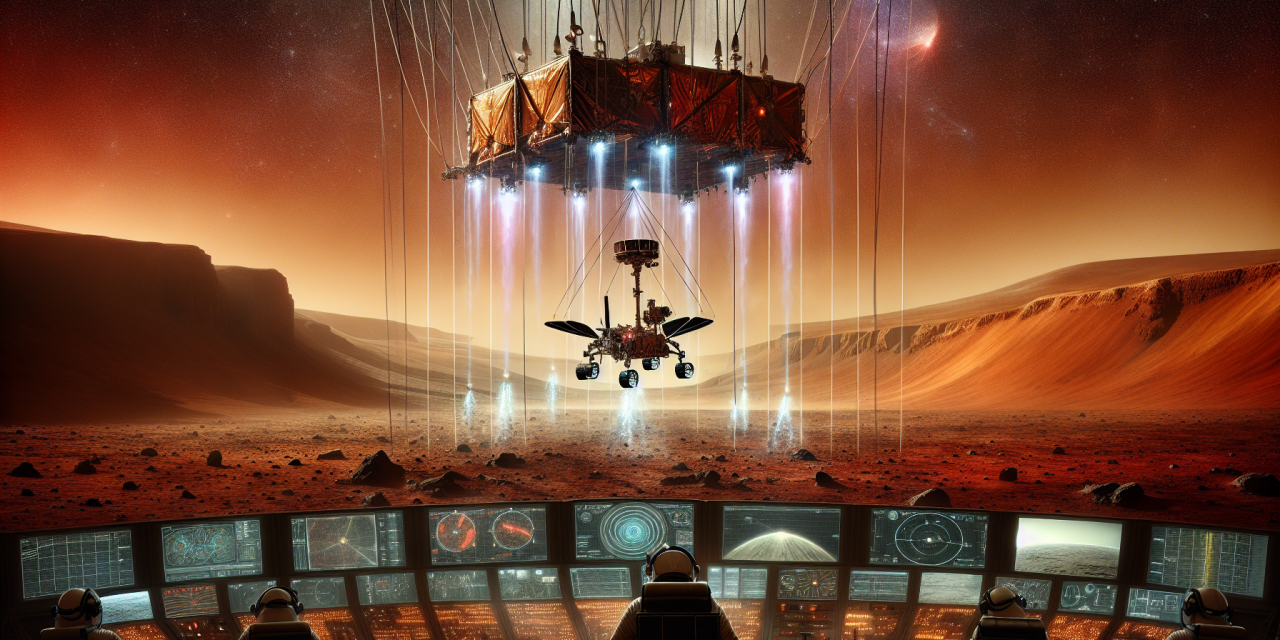Picture this: You’ve spent eight years planning a vacation to a place so remote that once you leave home, there’s no way to call, text, or email for help. Every decision has to be perfect because you can’t change course once you’ve started. And here’s the kicker—your travel time is eight months, but the most dangerous part happens in just seven minutes. Welcome to landing a rover on Mars, where mission control experiences what engineers call the “Seven Minutes of Terror.”
The Ultimate Remote Control Challenge
When you’re playing a video game and your controller stops working, you might throw it down in frustration. But imagine if your “controller” was trying to land a car-sized robot on another planet, and instead of lag measured in milliseconds, you had a delay of up to 24 minutes between pressing a button and seeing what happens. That’s the reality NASA faces when landing rovers like Curiosity and Perseverance on Mars.
Here’s the mind-bending part: by the time mission control on Earth receives the signal that a rover has started its landing sequence, the rover has already been on the Martian surface for seven minutes—either successfully deployed and taking pictures, or scattered in expensive pieces across the red desert. During those crucial seven minutes, there’s no human input, no real-time adjustments, no “okay, let me try turning it off and on again.” Everything depends on code written years earlier, tested thousands of times, and trusted completely.
When Your Code Has One Chance to Work
Think about the last time you wrote a program. Maybe you made a typo, forgot a semicolon, or mixed up your variable names. No big deal—you ran the code, saw the error message, fixed it, and tried again. You might have gone through this cycle dozens of times before everything worked perfectly. In most coding projects, failure is just another step toward success.
But Mars rover landings don’t get do-overs. The code controlling the Entry, Descent, and Landing (EDL) system must execute flawlessly on the first attempt. Every line of code, every algorithm, every decision tree has been scrutinized, simulated, and tested in conditions as close to Mars as possible. Yet despite all this preparation, when the moment comes, engineers can only watch, wait, and trust their work.
This scenario forces us to think differently about debugging. Instead of fixing problems after they occur, Mars rover engineers must anticipate every possible failure mode and build solutions into the code beforehand. It’s like writing a program that includes instructions for every possible error it might encounter, along with a plan to handle each one gracefully.
The Dance of Physics, Math, and Trust
Let’s break down what happens during those seven minutes. The rover, traveling at about 12,000 miles per hour, hits the Martian atmosphere like a meteor. The heat shield must protect delicate instruments while atmospheric friction slows the spacecraft down. Then a parachute deploys—but parachutes alone can’t do the job in Mars’ thin atmosphere. Finally, in perhaps the most audacious piece of engineering choreography ever attempted, a rocket-powered sky crane lowers the rover on cables before flying away to crash safely in the distance.
Each step depends on sensors detecting the right conditions, computers making split-second calculations, and actuators firing at precisely the right moments. The landing algorithm must account for wind, atmospheric density, terrain variations, and dozens of other factors. It’s like writing code that can drive a car, fly a plane, and operate a construction crane simultaneously, all while working with instruments that have never been tested in the actual environment where they must perform.
What makes this even more remarkable is the cumulative precision required. If any single component fails—if one sensor gives a bad reading, one calculation is off by a few percentage points, or one motor fires a fraction of a second too late—the entire mission could be lost. It’s a cascade of dependencies where each successful step enables the next, and there’s no room for the trial-and-error approach we typically use in software development.
Lessons for Earthbound Coders
You might wonder, “What does this extreme scenario have to do with my coding projects?” More than you might think. While few of us will ever write code with such dramatic consequences, the principles behind successful Mars landings apply to any project where reliability matters.
First, there’s the power of thorough testing. Mars rover teams don’t just test their code—they test it in chambers that simulate Martian atmospheric conditions, on landscapes designed to mimic Martian terrain, and with hardware subjected to temperature extremes, radiation, and vibration that exceed what they’ll encounter in space. They create testing environments so comprehensive that the actual mission becomes almost anticlimactic.
Second, consider the importance of building resilience into your systems from the ground up. Rover code doesn’t assume everything will work perfectly; it includes fallback procedures, error handling for scenarios that seem impossibly unlikely, and ways to recover from partial failures. This defensive programming approach—expecting things to go wrong and planning for them—makes code more robust even in everyday applications.
Finally, there’s something profound about the level of trust required. After years of development, testing, and preparation, the engineering teams must let go and trust their process. They can’t hover over their code, making tweaks and adjustments. They have to believe in the work they’ve done and the systems they’ve built.
The Poetry of Automated Precision
Perhaps the most beautiful aspect of Mars rover landings is how they represent human creativity expressed through code. Every line of that landing software embodies human decision-making, problem-solving, and engineering intuition, translated into instructions that can operate independently across the vastness of space. The rovers that have successfully landed on Mars carry with them not just scientific instruments, but also the hopes, dreams, and methodical thinking of thousands of people who will never set foot on another planet.
When Curiosity touched down in 2012 and when Perseverance landed in 2021, their success represented more than technological achievement. They demonstrated what becomes possible when we combine rigorous planning, exhaustive testing, and the courage to trust our work when it matters most.
The next time you write code, debug a tricky problem, or prepare to deploy a project, remember those seven minutes of terror. While your code might not need to work perfectly on another planet, the same principles apply: test thoroughly, plan for failure, build in resilience, and when the moment comes, trust the process you’ve created. After all, if code can land a rover on Mars, imagine what it might help you accomplish right here on Earth.








